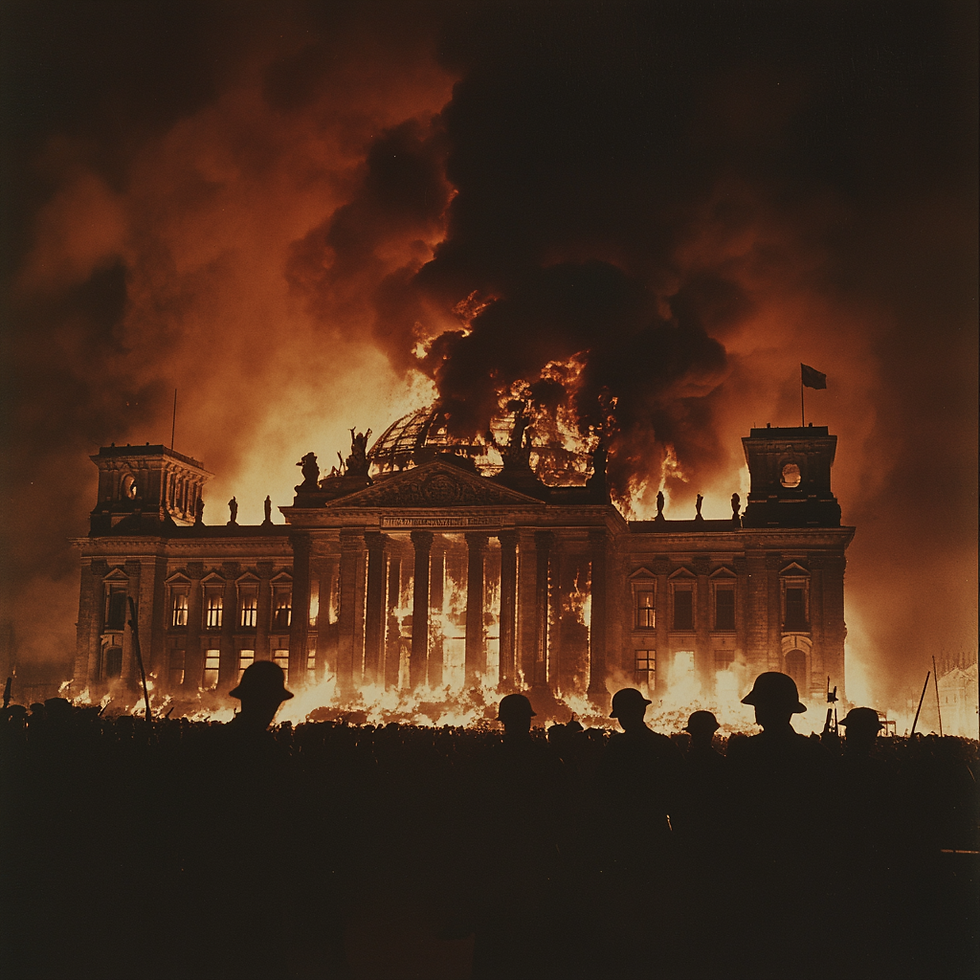The Reichstag Fire and the Rise of Nazi Terror
- Sidney Klock
- Feb 27
- 2 min read
On the night of February 27, 1933, the Reichstag, Germany's parliament, was engulfed in flames. The fire came at a pivotal moment for Adolf Hitler, who had just been appointed Chancellor a month earlier. Amidst the chaos, the Nazi government found the perfect excuse to expand its repression and silence political opponents. The next day, President Paul von Hindenburg signed the Reichstag Fire Decree, suspending fundamental rights and paving the way for mass political persecution. From that moment on, German democracy was not consumed by fire, but by fear.

The Nazi regime immediately blamed the communists for the attack. Marinus van der Lubbe, a young Dutch communist, was found near the building and swiftly accused of the crime. The fire became a propaganda tool, justifying the suppression of civil liberties and the mass arrest of communists, socialists, and other opponents. While the true circumstances of the fire remain debated, many historians argue that the Nazis may have planned or at least facilitated the attack to legitimize their crackdown.
With society in fear and the political left dismantled, Hitler quickly moved towards absolute power. The March 1933 elections took place under intense violence and manipulation, securing Nazi control of parliament. Just weeks later, the Enabling Act was passed, granting Hitler unlimited legislative authority and rendering the Reichstag a mere formality. The fire was not just an isolated event but a crucial turning point in the transition from democracy to dictatorship.
The impact of this episode still resonates today as a classic example of how crises can be manipulated to justify authoritarian rule. The Reichstag Fire served as a blueprint for countless government strategies throughout history: using fear as a political tool, creating internal enemies to consolidate power, and deliberately eroding democratic institutions. In times of polarization and misinformation, this event reminds us how fragile civil liberties can be when fear becomes a tool of governance.
Curiosity
The trial of Marinus van der Lubbe was a carefully staged spectacle by the Nazi regime. Though he confessed, strong evidence suggests he was coerced or used as a scapegoat. In 2008, a German court overturned his posthumous conviction, ruling that the trial had been politically motivated and unfair.
References
EVANS, Richard J. The Third Reich in Power. Penguin Books, 2005.
KERSHAW, Ian. Hitler: A Biography. W. W. Norton & Company, 2008.
MOMMSEN, Hans. The Third Reich and the Final Solution. Palgrave Macmillan, 2001.
STONE, Norman. A Short History of Germany. Penguin Books, 2019.
Official documents from the German Constitutional Court on the rehabilitation of Marinus van der Lubbe (2008).



Comments